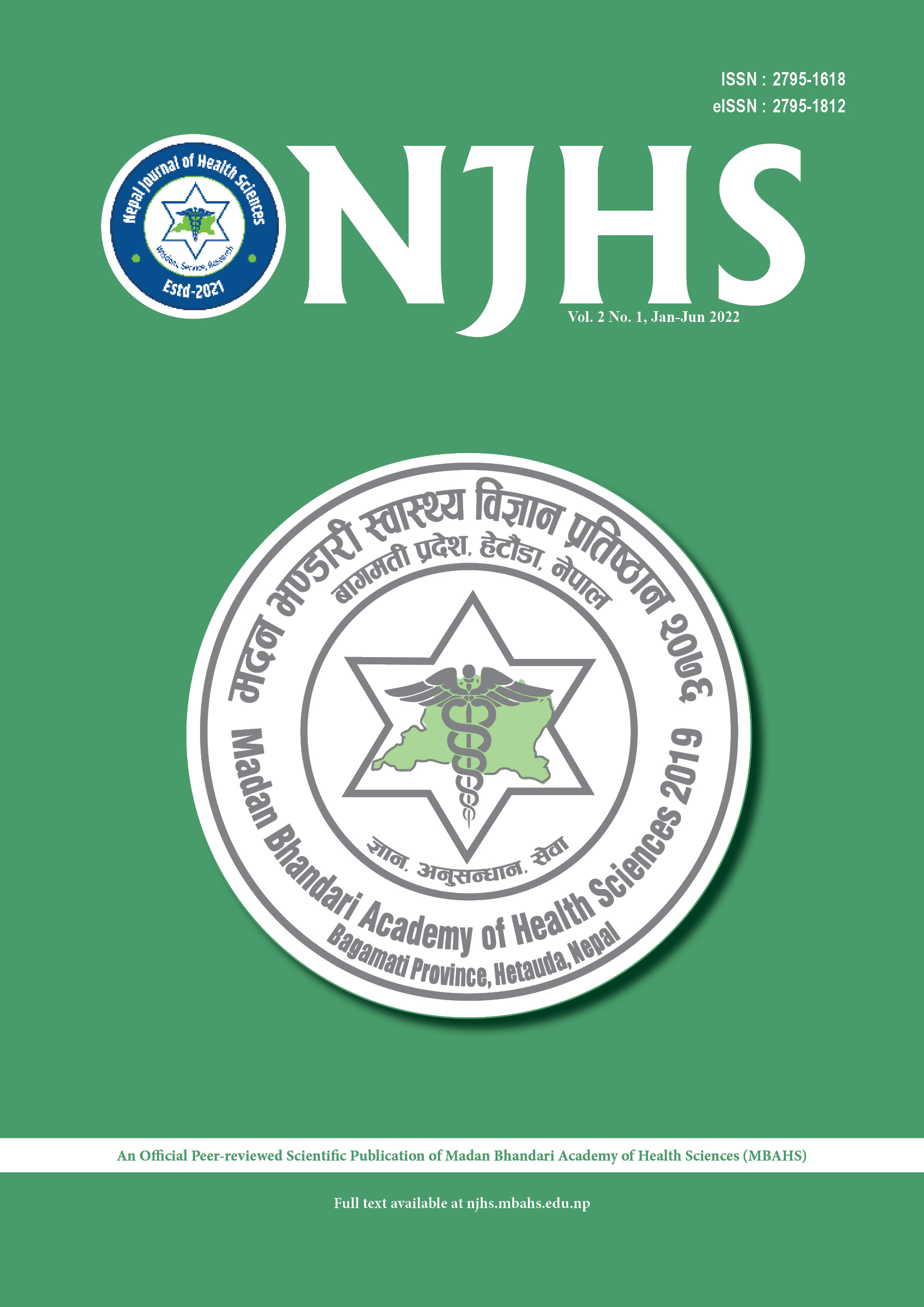Sphenopalatine Ganglion Block versus Conservative Management for Post Dural Puncture Headache in Cesarean Section
DOI:
https://doi.org/10.3126/njhs.v2i1.47158Keywords:
Cesarean section, pain, post-dural puncture, sphenopalatine ganglion blockAbstract
Introduction: Post-dural puncture headache is one of the frequently encountered and inevitable post-operative complications of the subarachnoid block. The primary treatment is always considered conservative management in such instances. However, an epidural blood patch remains an invasive gold standard treatment. Sphenopalatine ganglion block is propounded as minimally invasive with prompt and better outcomes.
Objective: To assess the efficacy of Sphenopalatine ganglion block (SPGB) when compared to conservative management based on the onset of analgesia and its duration.
Methods: This is a prospective study performed on 40 obstetrics patients who underwent Lower segment cesarean section in Lumbini Medical College and Teaching Hospital (LMCTH) who complained of Post dural puncture headache within 7 days. All the parturients are categorized into Group A, those who are treated with sphenopalatine ganglion block, and Group B, where post-dural puncture headache was treated with conservative management. Independent t-tests and Fischer’s test were used for statistical analysis.
Results: The patients in group A showed positive outcomes where all of them were relieved of post-dural puncture headache within 10 mins after Sphenopalatine ganglion block (p<0.001) and the mean pain score, based on a numerical pain rating scale was less or equal to 4 for the first 8 hours.
Conclusions: Sphenopalatine ganglion block (SPGB) could be used as an effective first-line treatment modality in the management of post-dural puncture headache compared to conservative management.





